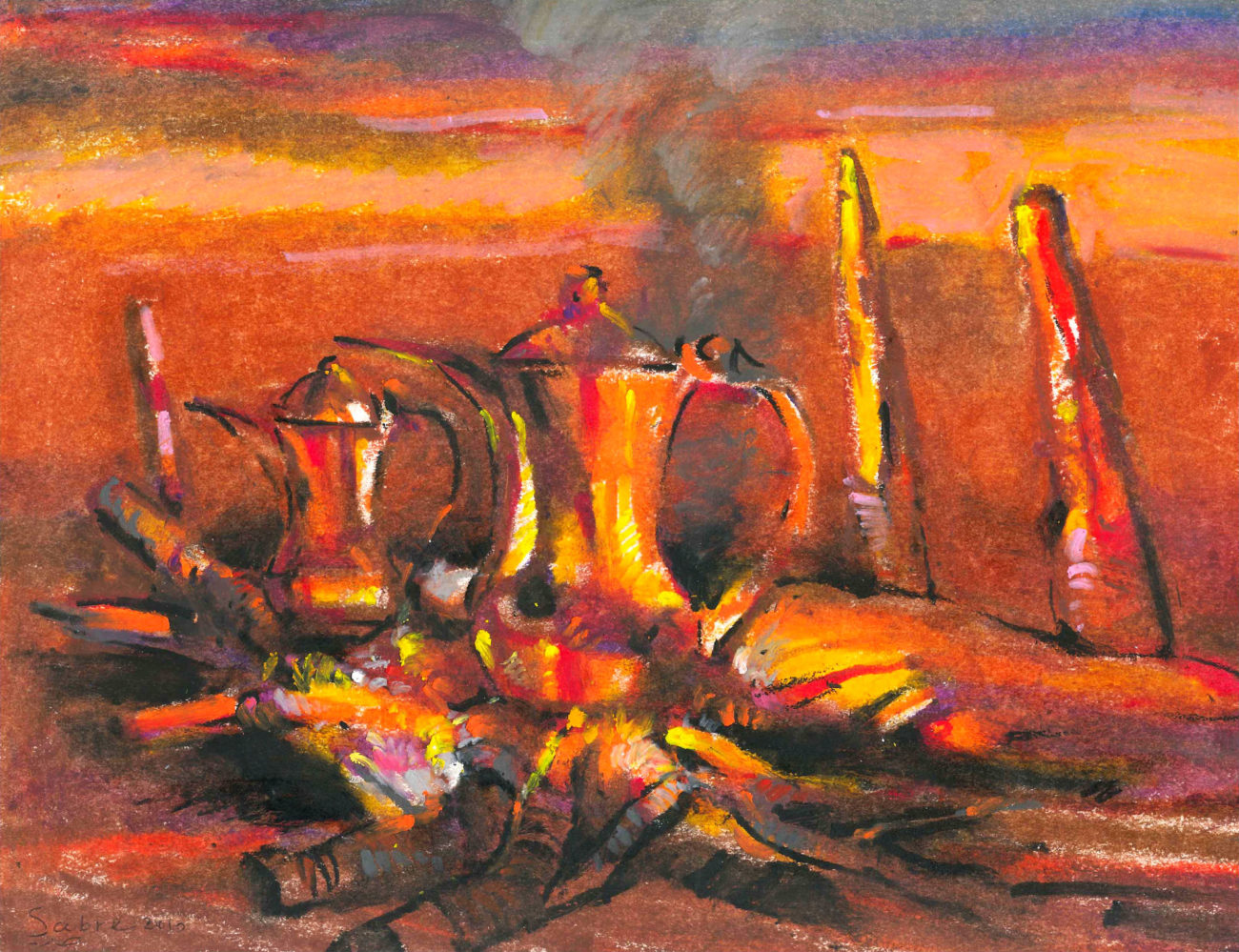NEW GALLERY HOURS: Closed Monday and Tuesday – Wednesday through Saturday noon to 9:00 pm – Sunday noon to 3:00 pm
Catamount Arts will host the exhibition “Art from Guantánamo Bay,” curated by Erin L. Thompson, in its Fried Family Gallery from Wednesday, June 22, through Sunday, August 21, 2022. There will be a reception and panel discussion on Sunday, June 26th, at 7pm, at Catamount Arts on Eastern Avenue in St. Johnsbury.
The critically acclaimed exhibit displays nearly a hundred evocative works made by six men detained at the United States military prison camp known as Guantánamo Bay. The six men, all of whom have been cleared for release (although two remain in detention), have been detained at Guantánamo Bay for as long as 20 years without being charged or convicted of a crime.
“Art from Guantánamo Bay” has generated widespread press coverage from around the world, resulting in the creation of a prohibition against the removal of artwork from the prison. The 2017 policy forbids Guantánamo Bay detainees from even showing artwork to their lawyers, and lawyers’ notes describing artwork are classified.
Freed detainees are not allowed to remove even their own artwork from the prison; after guards told detainees that the art they left behind would be burned, Rear Admiral Edward Cashman clarified the policy, explaining that art would be disposed of like “most things are disposed of. Things are shredded, thrown away, whatever, if necessary.”
Artist and detainee Moath al-Alwi was cleared for release in January of this year, but it will likely be years before U.S. authorities reach an agreement with a host country for him. al-Alwi and fellow artist and detainee Ahmed Rabbani, who was cleared for release in 2021, have said they will fight to keep the art they created and which helped them survive the prison where they were detained without reason. It is more important, al-Alwi told his lawyer, that his art leave Guantánamo than he does.
Exhibit curators hope this exhibition will shine light on the ongoing injustices being perpetrated against men who have never been convicted or even charged with a crime. “Viewers can make up their own minds about whether the art displayed in Catamount’s Fried Family Gallery is dangerous enough to be shredded or burned,” says a statement from curator Erin L. Thompson, “or whether, like its creators, it ought to be set free.”
The exhibit is an expanded version of an earlier show, “Ode to the Sea: Art from Guantánamo,” the title of which refers to a common and poignant theme among many of the collection’s paintings. Although buildings in the prison camp have windows overlooking the Caribbean Sea, they are covered with tarps. Prisoners only saw the water once, in 2014, when the tarps were removed before a hurricane.
“Everyone who could draw drew the sea,” former detainee Mansoor Adayfi wrote in an Op-Ed for the New York Times. “(T)he detainees put their dreams, feelings, hopes, and lives in (the drawings.) The sea means freedom no one can control or own, freedom for everyone.”
Paintings, drawings, and collages (one detainee used soap as glue) represent a variety of experiences, perspectives, and symbols, including iconic American landmarks, a mother’s tearful eye, and a visual representation of symptoms endured since a brain injury incurred during an interrogation. Some of the art is signed by the numbers used to identify detainees rather than their names, and some bear stamps reading, “Approved by US Forces,” signifying clearance for release to attorneys before all prisoner artwork was deemed property of the U.S. government, destined to be confiscated and destroyed.
Perhaps ironically, the original exhibit, “Ode to the Sea,” was the impetus for the embargo on art created in Guantánamo Bay. Prior to the exhibition and the resulting international attention, the Pentagon allowed detainees to share artwork through their attorneys. “Ode to the Sea” and its updated, expanded current incarnation “Art from Guantánamo ” have exhibited throughout the U.S., although none of the artists, even if they do leave Gitmo, will see it; they are not permitted to set foot on American soil.
Included in the Catamount Arts exhibit will be work by artist detainee Abdul Zahir, a client of St. Johnsbury attorneys Robert Gensburg and David Sleigh. Gensburg and Sleigh volunteered for over ten years with the Guantánamo Bay Bar Association, a group of nearly 600 lawyers nationwide assembled by the Center for Constitutional Rights, a nonprofit civil liberties law firm providing legal representation for detainees.
“Bob represented Abdul Zahir who was freed after 14 years of captivity as a case of ‘mistaken identity’ (and) now lives with his family in Oman,” reports Robert Gensburg’s widow, Leslie. “The lovely watercolor he did was a tribute to Bob and David Sleigh. He depicted a sailboat, explaining that it shows Captain Bob and Captain Dave sailing him home.”
David Sleigh and Leslie Gensburg will join artist and former detainee Mansoor Adayfi in a panel discussion at Catamount Arts, on June 26th, facilitated by “Art from Guantánamo Bay” curator Erin L. Thompson. Adayfi will participate from Serbia via Zoom.
“Art from Guantánamo Bay” will show at Catamount Arts, in St. Johnsbury, from June 22nd through August 21st. For more information on the show, the gallery, and Catamount’s evolving Covid-19 safety guidelines, please visit www.catamountarts.org. A selection of works from the show will also be displayed at the Vermont Arts Council in Montpelier.
Special thanks are due to the Center for Constitutional Rights, Reprieve US, Beth Jacob, and exhibition manager Sam Monaco.




